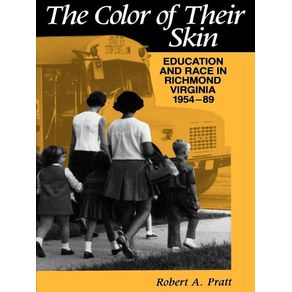The first major study of school desegregation in a Virginia locality to appear in over twenty-five years, The Color of Their Skin traces the evolution of the Richmond public schools from segregation to desegregation to resegregation over the decades following the Brown decision. Robert A. Pratt explores the undercurrents of white opposition to the dismantling of the "separate but equal" system and analyzes the overall impact of the process on the life of the city. In doing so he has given us a portrait of a society moving, in some ways, backward in time.
Although Richmond's "passive resistance" to integration was not unique, it was notable for having occurred within the broader context of statewide "massive resistance." The schools of Richmond, unlike those in some other localities in Virginia, remained open but segregated, a policy designed to avoid integration without flagrant defiance of the law. By choosing this subtler form of defiance, city officials were able, in effect, to stave off integration for nearly two decades.
The Color of Their Skin also covers Richmond politics concerning the issue. The clash of conservative idealogues such as James J. Kilpatrick and former governor Mills Godwin with activist black attorneys like Oliver W. Hill and Samuel W. Tucker bred a "conservatively" moderate element that was represented on the Richmond school board by the likes of board president (and later Supreme Court Justice) Lewis F. Powell. Powell attempted to chart a course between the extreme factions, a course that Pratt accurately describes as "tokenism," since only a handful of blacks was ever admitted to Richmond's schools until the 1970 school busing decree.
Pratt demonstrates how the impact of school desegregation was felt beyond the schools, in the demographics of the city itself. Because of the glacial slowness of the integration process, intransigent whites had time to flee the city school system and to establish their children in private or suburban public

